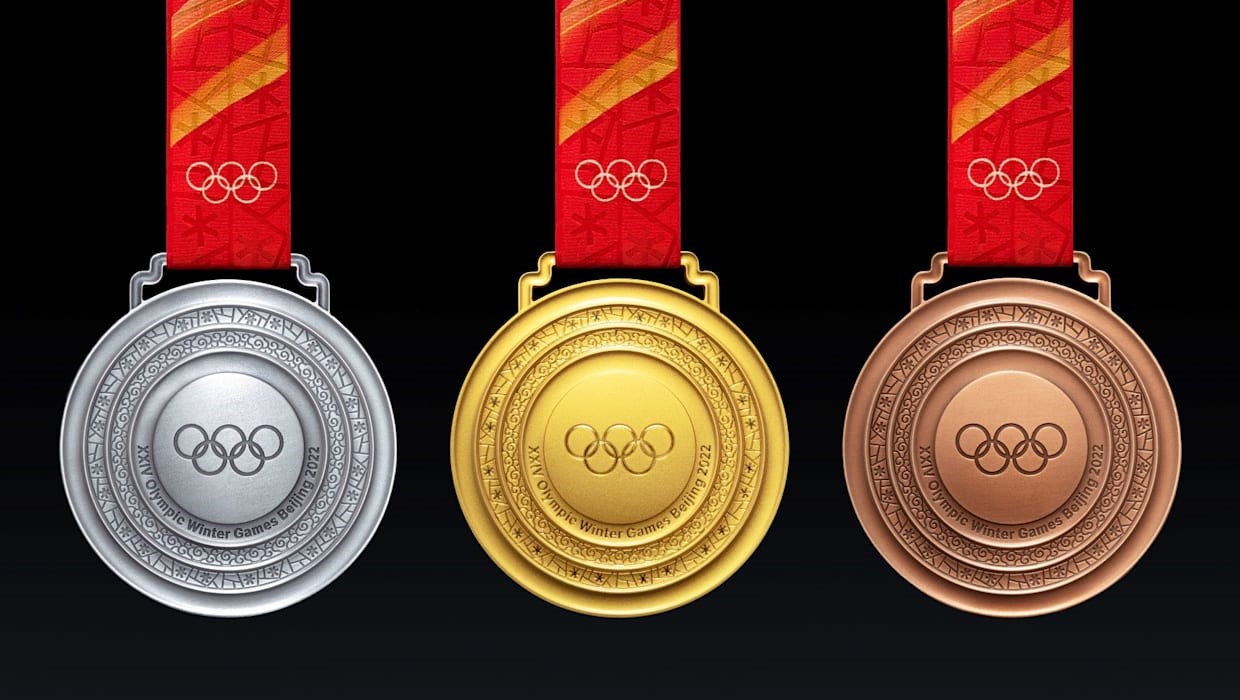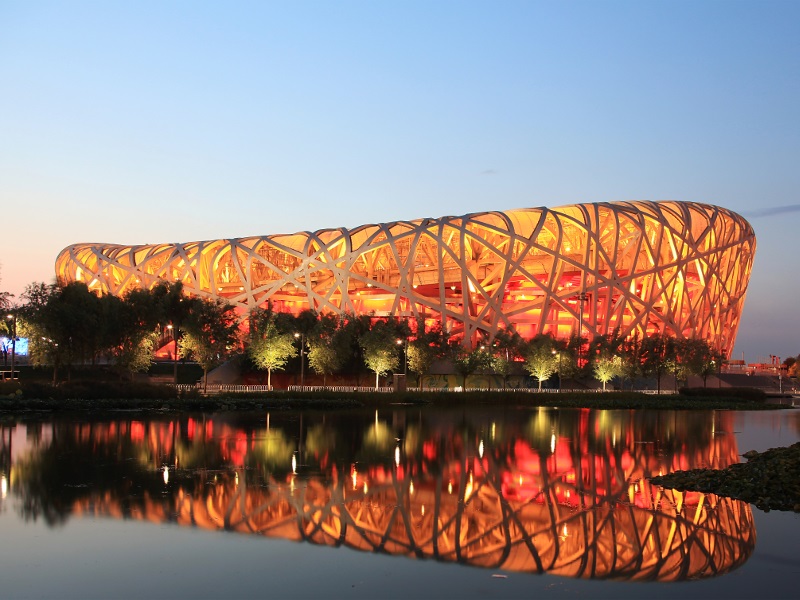
The Olympic Games were founded on a love of sport, unity, and competition and an ancient tradition of physical fitness. With such rich history and meaning, an event like the Olympics glows with symbolism and iconography that references its powerful themes. Two unique and well-known symbols of the Olympic Games, the five rings and the flaming torch, carry a particularly strong significance to Olympic values. Today we witness this from our screens watching Beijing kick-off the 24th Winter Olympic Games with ceremonial flames and concerts that unite us all together as a globe.
“Imagine” was sung in the Bird’s Nest stadium with beauty as digital delicate snowflakes sprinkled throughout the stage. The audience could feel the delicacy, difference, and individualism coming together as one. The Bird’s Nest has a striking, lattice shell design on its exterior made of curving steel beams. China’s most famous artist, Ai Weiwei, helped design the stadium to symbolize freedom, openness and optimism. Ai became an avid critic of China’s Communist Party, and in a cruel twist of fate, has been living in exile in Europe for years, most recently in Portugal.

The Bird’s Nest is a stage and affirmation for national unity. This is a joyful moment where the world is watching and where the world wants to be connected together as one. “Higher, further and faster” is the motto of the Olympics. Each athlete strives to exceed previous records and to go beyond the limitations of the mind and body. This is an exhibit of self-transcendence. Each athlete has dedicated their time to pursue their best efforts. This is a good time for all of us to reflect our own inner yearning to transcend and do better.
Emil Zatopek, a long-distance runner Olympian and legend from 1948 was coined “The Locomotive.” He dominated in his sport. This is evidenced by being the only runner to win the 5,000 meter, 10,000 meter and the marathon at the same Olympic Games in London. He shared some beautiful words as a Czech citizen and a man who felt a liberation of the spirit while competing in 1948. He witnessed the dark days of the war, political strife, bombing, killing, starvation; yet he trained and stayed focused to be considered for the Olympics. To him, the Olympics were his only hope of light and ammunition to be the locomotive spirit he displayed to everyone in the stadium. He said, “I went into the Olympic Village in 1948 and suddenly there were no more frontiers, no more barriers. Just the people meeting together. It was wonderfully warm. Men and women who had lost five years of life were back again.”
During the Olympics it seems it’s much easier to break down the barriers that often keep countries and people at odds. Through sport, we can remember there is much more that unites us than divides us.
At the 24th Winter Olympic Games, the top athletes will be standing at the podium adorned with one of three medals: gold, silver,or bronze. These medals share more significance than just being noted as the top athlete within its category. According to the International Olympic Committee, the Beijing 2022 medals are named “Tong Xin,” which mean “Together as One.”
These medals are composed of five rings and a center with a design based on Chinese ancient jade concentric circle pendants. While it may be easy to say that sports, especially at the level of the Olympics, should not be politicized, there are a lot of people in sports who have an opinion. “The fact is that sports has been political from the beginning of time, and every Olympics has had an element of politics in it,” New York Times Beijing bureau chief Steven Lee Myers shares.
Ceremonies are for messaging. We witnessed the presentation of simplicity in the Beijing Olympic Games opening ceremony. We saw a dove made of snowflakes that transformed into a heart at the completion. How will we demonstrate our muscle after a presentation like this? What can we unpack from a ceremony like this? Imagine all the people as we persevere through a pandemic, experience life through a new lens and evaluate human rights.
In dreams and in life, nothing is impossible.


